Our project with Bassmaster: Electrofishing in action
By Lochow Ranch
In episode 2 of our Bassmaster project, we find out what lurks in the depths of “Lake Y.”
You can see an electrofishing survey in action as we categorize the fish population of the anonymous 56-acre creek-fed lake in Alabama.
Click here to check out episode 2 of our video series with Bassmaster, “The Lake Y Project.”

Lochow Ranch president John Jones chats with James Hall, editor-in-chief of Bassmaster Magazine, to discuss the species, sizes and weights of fish found during the survey.
Electrofishing briefly shocks and paralyzes fish and allows for a lake management inventory of the population to be created.
John first studied Lake Y with a walkabout, identifying problems and opportunities. John advised Lake Y owners start an improvement strategy with satellite photos identifying other water body influences and an examination of the lake’s history: when it was built, watershed influences and management approaches. He identified Lake Y as being off color and in a shallow ravine with a small dam.
His visual assessment also included evidence of otters, and identified issues surrounding the lake’s number and condition of boats, fish feeders and spillway.
Bassmaster says Lake Y “could well represent the majority of small lakes and ponds scattered throughout the country.” And, indeed, that’s exactly what John found after analyzing the data his team collected during the electrofishing survey.
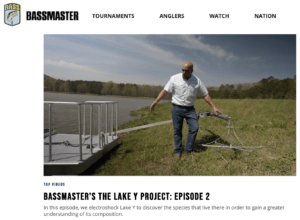 “Really, this is a very average lake,” John said, “which is a great starting point. This is what people are dealing with all over America. You’re overpopulated with small stunted bass, not horrifically so but certainly so. You have all the right species in the lake. In addition, you have some species that, we’ll call them undesirable, stuff that’s not really adding to production.
“Really, this is a very average lake,” John said, “which is a great starting point. This is what people are dealing with all over America. You’re overpopulated with small stunted bass, not horrifically so but certainly so. You have all the right species in the lake. In addition, you have some species that, we’ll call them undesirable, stuff that’s not really adding to production.
“I feel like we got great data today,” he added.
There are lots of variations of electrofishing boats, John explained, but Lochow Ranch “basically builds ours in-house.” A generator using between 10-50 amps pushes about 10,000 volts through cables attached to the boat. The current puts fish in a state of temporary paralysis and allows for easy collection and analysis.
One survey will produce a dataset of about 3-5% of the lake. Lochow’s teams use it daily both for exploring new populations as well as for managing existing populations. Multiple electrofishing surveys over time will allow for an even more complete picture.
It’s an excellent tool for correcting an out-of-balance pond. Stunted fish or unwanted species can be easily and quickly removed as part of the service. And the survey acts as the reference point for a long-term pond management plan and provides clues for corrective stocking and harvest recommendations.
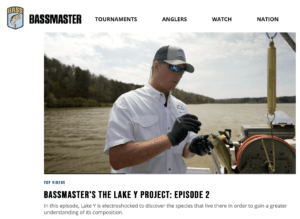 While on the boat, Lee Schoech, one of our fisheries biologists, identified several species, including largemouth bass; freshwater drum (which indicated the creek is substantial); channel catfish; carp; threadfin shad and gizzard shad; bluegill; crappie; redear sunfish; longnose gar and spotted gar among them.
While on the boat, Lee Schoech, one of our fisheries biologists, identified several species, including largemouth bass; freshwater drum (which indicated the creek is substantial); channel catfish; carp; threadfin shad and gizzard shad; bluegill; crappie; redear sunfish; longnose gar and spotted gar among them.
Lee rubbed swabs on the tongues of the fish to get their genetic profile and establish a baseline for the fishery.
Asked about his gut feeling on Lake Y, John says, “I’m going to enjoy this project. … I believe this lake is going to take just some very traditional improvements. It’s going to do a heavy feeding program, a quality stocking program. We’re going to look at the genetics on the fish.”
But in the next episode, Lochow and Bassmaster are going to focus on ways to add structures and cover to the lake and create much-needed habitats to increase productivity. The structures also create areas where fishermen know they can find fish.
Capping off the episode, James asked John about some of the craziest things John has shocked up in his career of electrofishing surveys.
The largest largemouth bass he’s personally shocked was 19.1 pounds, John replied, as well as a lot of fish in the 15-16-pound category. He’s pulled alligator gar he believes were well over the state record; blue and yellow cats approaching triple digits; and goldfish over 10 pounds.
Aquarium fish such piranha are always a surprise, but the cormorants, alligators and the 60-70-pound beaver were also very memorable, he said laughing.
Follow us on Instagram, Facebook or Twitter to see the progress in Lake Y in coming weeks.
Interested in getting your own pond assessment? Get in touch to schedule yours today!
Why Choose Lochow Ranch for Pond & Lake Management
Serving Texas, Oklahoma, Arkansas and Louisiana, Lochow Ranch Pond & Lake Management proudly puts more than two decades of experience to work for you. Our team includes biologists, technicians and other professionals with deep expertise in pond and lake management services.
Check us out if you are considering building a lake, looking for pond stocking services, to buy fish for a pond, or getting professional pond management and maintenance or fishery management. Our services include lake design, pond construction, pond renovation, pond water testing, electrofishing, pond stocking, control of pond weeds, and pond liming and fertilizing. Let us help you build your dream pond that will delight your family and friends for generations to come.
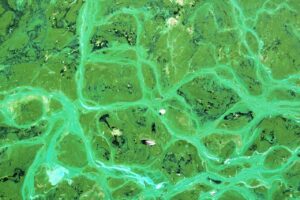
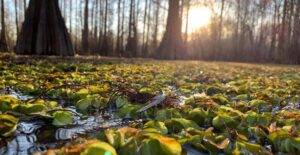
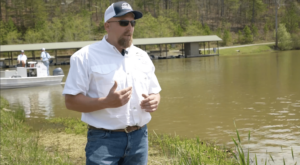
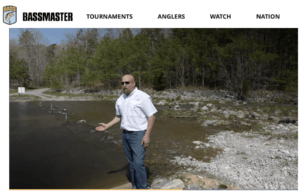
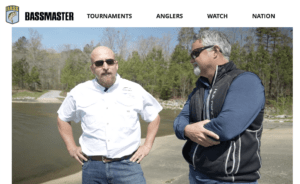

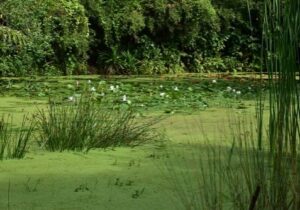

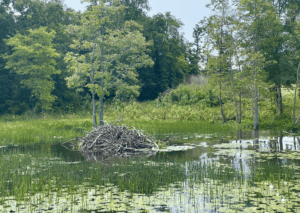
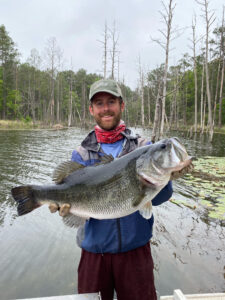
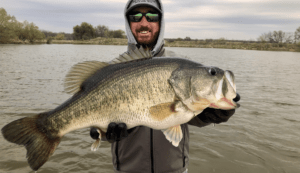
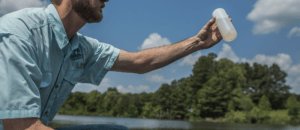
 Though most fishery managers think of water quality management as a tool to boost fish production, water quality parameters sometimes need to be manipulated to promote shifts in aquatic plant and algae communities to better support existing fisheries.
Though most fishery managers think of water quality management as a tool to boost fish production, water quality parameters sometimes need to be manipulated to promote shifts in aquatic plant and algae communities to better support existing fisheries.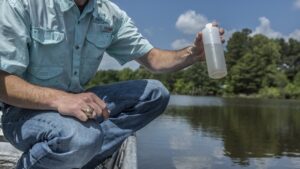 Time after time,
Time after time, 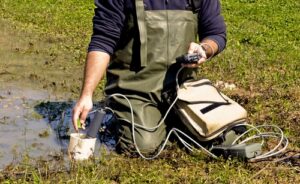
 The first step in managing nutrients is to understand where the bulk of a pond or lake’s excess nutrients are coming from. The most likely sources are applied fertilizers (both inorganic and organic), high nutrient well water, and direct animal waste.
The first step in managing nutrients is to understand where the bulk of a pond or lake’s excess nutrients are coming from. The most likely sources are applied fertilizers (both inorganic and organic), high nutrient well water, and direct animal waste.
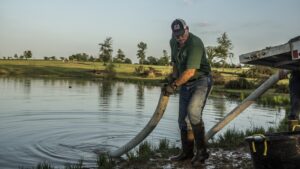
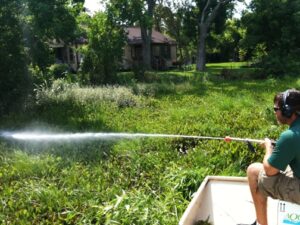 As we detailed in a
As we detailed in a 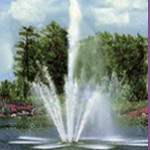 Repairs could address obvious signs of wear or just the cleaning of filters and screens. Lochow offers a range of
Repairs could address obvious signs of wear or just the cleaning of filters and screens. Lochow offers a range of 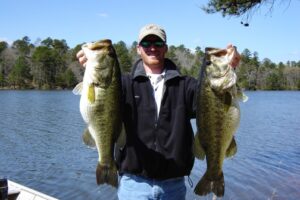
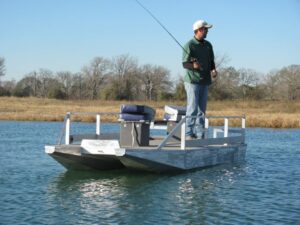 Be sure to conduct the necessary annual harvest of predatory fish to ensure that forage populations thrive. It goes without saying that no fishery can sustainably support predation from huge flocks of avian predators without some supplemental stocking from time to time.
Be sure to conduct the necessary annual harvest of predatory fish to ensure that forage populations thrive. It goes without saying that no fishery can sustainably support predation from huge flocks of avian predators without some supplemental stocking from time to time.
Recent Comments